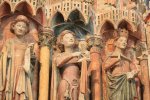Article
-
Echoes of “Perceval ou le Conte du Graal” (c. 1182-1190) by Chrétien de Troyes in the work of Rubén Darío (1867-1916)
Antonia Javiera CABRERA MUÑOZ
Original title: Ecos de “Perceval ou le Conte du Graal” (c. 1182-1190) de Chrétien de Troyes en la obra de Rubén Darío (1867-1916)
Published in Languages and Cultures in Tradition
Throughout history, the myth of King Arthur and the Knights of the Round Table has been conceived as a model, an ideal of human action. They are the model of perfect conduct that transcends time: we first hear of this myth in Chrétien de Troyes, in the 12th century, in the unfinished work “Perceval ou le Conte du Graal” (c.1182-1190), translated into Spanish by Martín de Riquer as “Perceval o el Cuento del Grial” (1961). In Spanish-American literature, the Nicaraguan poet Rubén Darío (1867-1916) published several works in which the medieval is present in poetry and prose, such as in the short story “A las orillas del Rhin”, published in serial form in the magazine “El Porvenir” de Nicaragua on 14 July 1885. In poetry, we have more references to medieval characters, such as “Percival and Lohengrin”. In Troyes’ version, Percival admits his mistakes and returns to complete his quest for the Holy Grail. In Darío, similarly, we have an erratic Percival, characterised as “el loco luminoso” (“the luminous madman”), which leads us to believe that there is a possible intertextual relationship between these works. We ask ourselves: what is the influence of this archetypal character in Darío’s poetry, which, like Troyes, portrays him as a buffoon or a clumsy character according to Mircea Eliade’s reading (1938), and which may have possible connections with the character of “Don Quixote”, the Knight of the Sad Countenance? The aim is to bring the myth closer to the literature of the two authors in question, based on the notion of myth as a human archetype.
-
The human being as a speaking being. Heidegger’s appropriation of Aristotle’s distinction on the fundamental modes of λόγον ἔχον (having language)
Bento Silva SANTOS
Original title: O ser humano como um ente que fala. A apropriação heideggeriana da distinção de Aristóteles sobre os modos fundamentais do λόγον ἔχον (ter a linguagem)
Published in Languages and Cultures in Tradition
The article deals with Heidegger’s appropriation of Aristotle’s distinction of the fundamental modes of λόγον ἔχον (“having language”), as outlined by the Stagirite in Book VI, Chapter 2 of “Nicomachean Ethics”. In this sense, I emphasize, firstly, an aspect of the “scientific” part of the soul regarding the genesis of wisdom; secondly, I stress the importance of the distinction between wisdom and technique in relation to the growing epistemological autonomy of technique; thirdly, I comment on the difference in levels of understanding between experience and technique. Finally, I conclude with reflections on the increasingly autonomous character of saying within doing, based on a brief comparison of technique and science.
-
The Persistence of the Classical Ideal in the Portuense Works of Ángel Acosta Martín: Academicism and Tradition in 20th-Century Canarian Sculpture
Clementina CALERO RUIZ; Domingo SOLA ANTEQUERA
Original title: La pervivencia del ideal clásico en la obra portuense de Ángel Acosta Martín (1922-2015): academicismo y tradición en la imaginería canaria del siglo XX
Published in Languages and Cultures in Tradition
Our article revolves around the image of Our Lady of Mount Carmel and the sculptor Ángel Acosta Martín. Based on the study of the statue, we have been able to confirm the decisive role that his academic training played in his search for inspiration. On one hand, his knowledge of classical Greek sculpture provided him with the models, on the other hand, the contemplation of works by 18th-century Canary Islands artists allowed him to demonstrate to what extent those “ancient” models could be brought up to date under a new appearance.
Issue (Mirabilia Ars)
-
On issues of Art and Aesthetics
Sobre cuestiones de Arte y Estética
Organized by José María SALVADOR GONZÁLEZ (org.)
Mirabilia Ars 01 (2014/2)
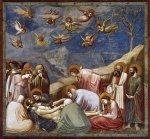
-
El Poder de la Imagen. Ideas y funciones de las representaciones artísticas
Organized by José María SALVADOR GONZÁLEZ (org.)
Mirabilia Ars 02 (2015/1)
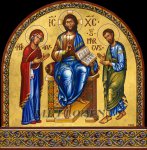
-
La Imagen del Poder. Epifanías de la Potestas
Organized by José María SALVADOR GONZÁLEZ (org.)
Mirabilia Ars 03 (2015/2)
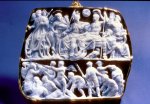
-
Ars moriendi. Ideas, ritos e imágenes de la muerte
Organized by José María SALVADOR GONZÁLEZ (org.)
Mirabilia Ars 04 (2016/1)
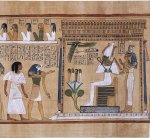
-
The body in occidental aesthetics
Organized by José María SALVADOR GONZÁLEZ (org.)
Mirabilia Ars 05 (2016/2)
